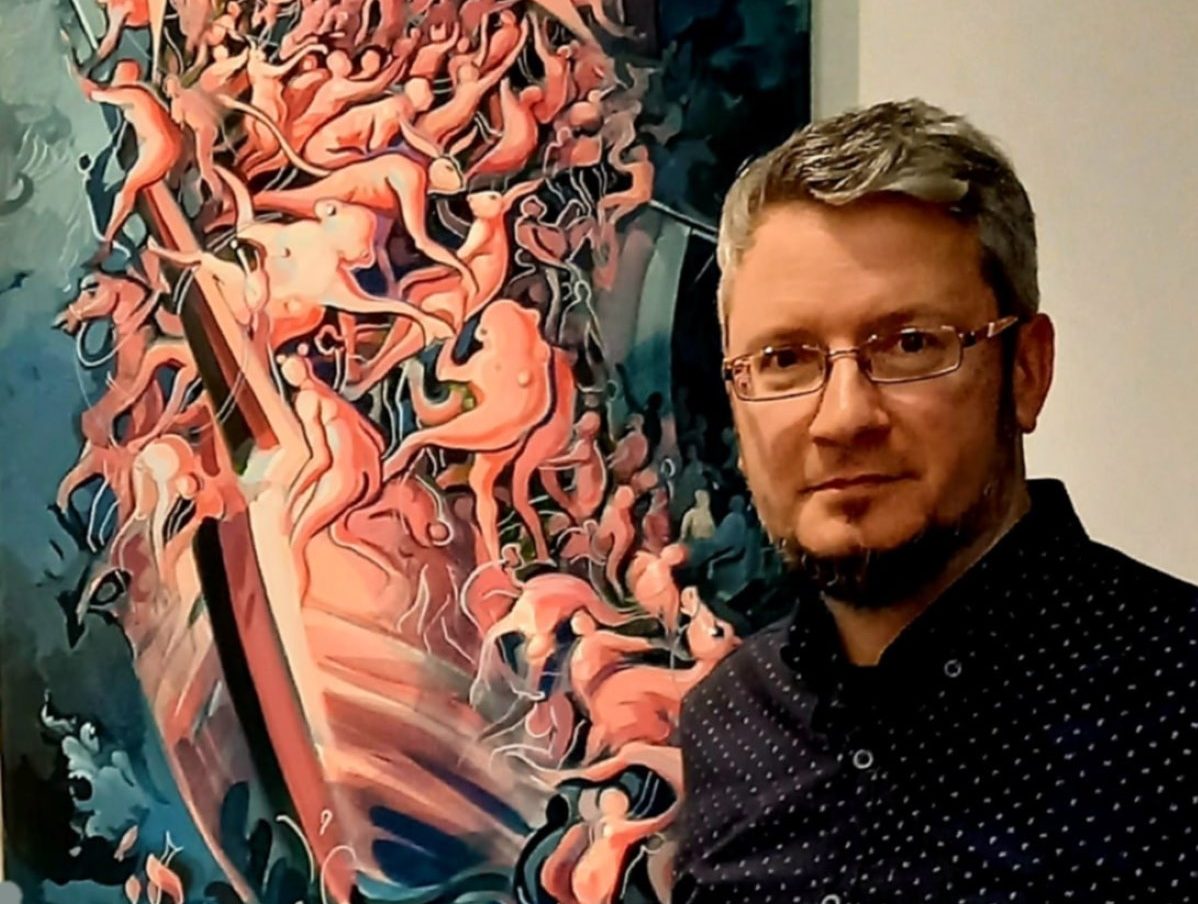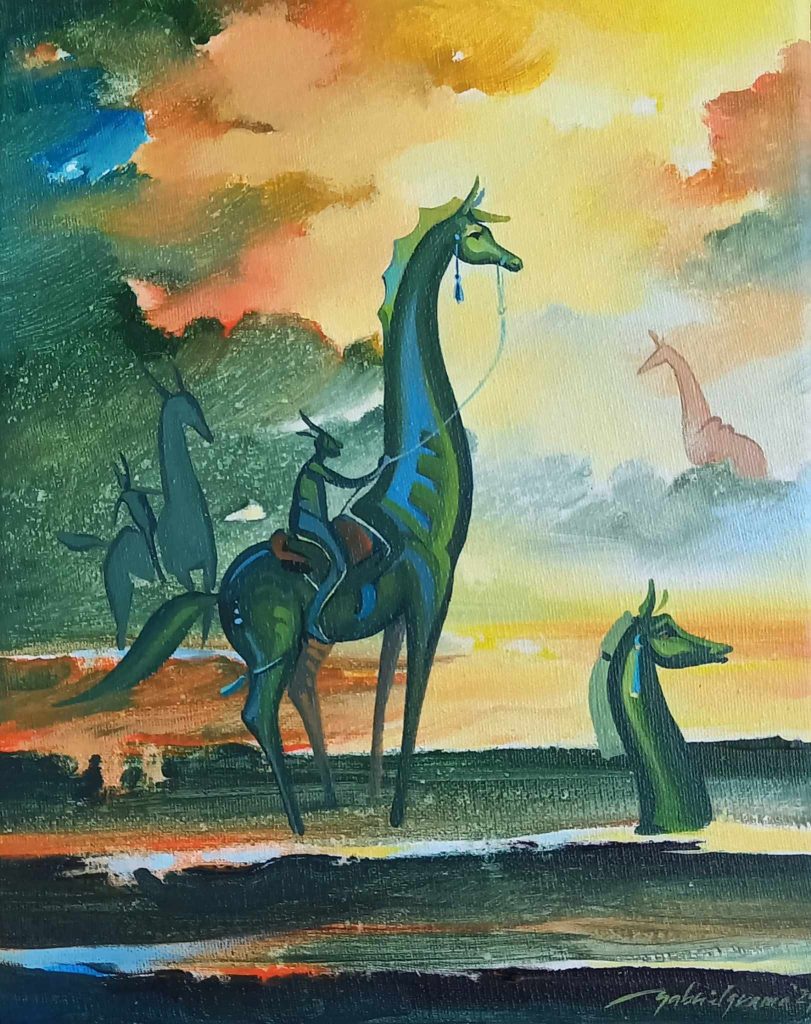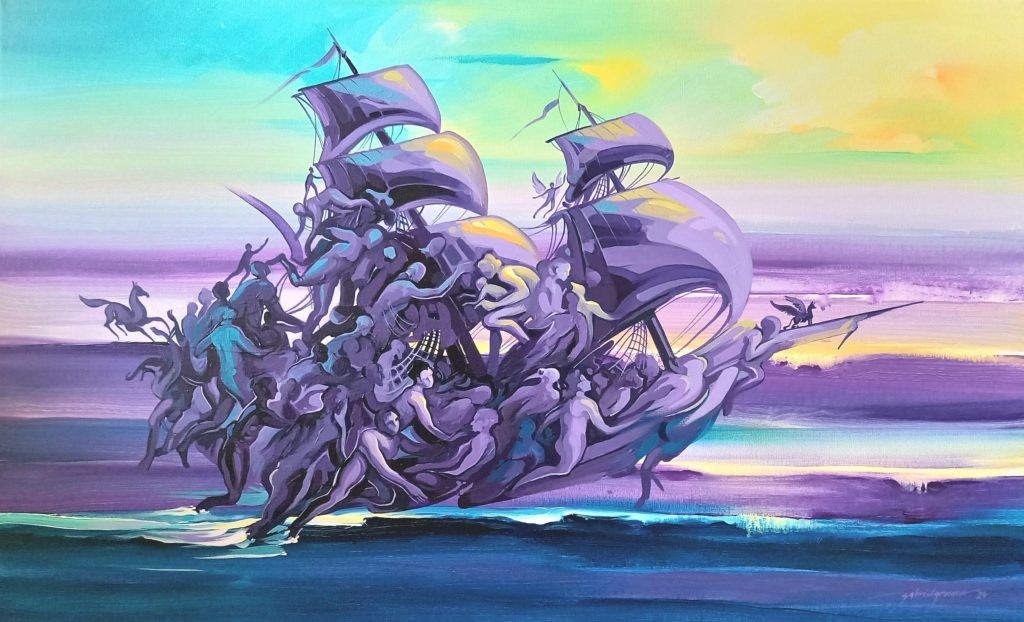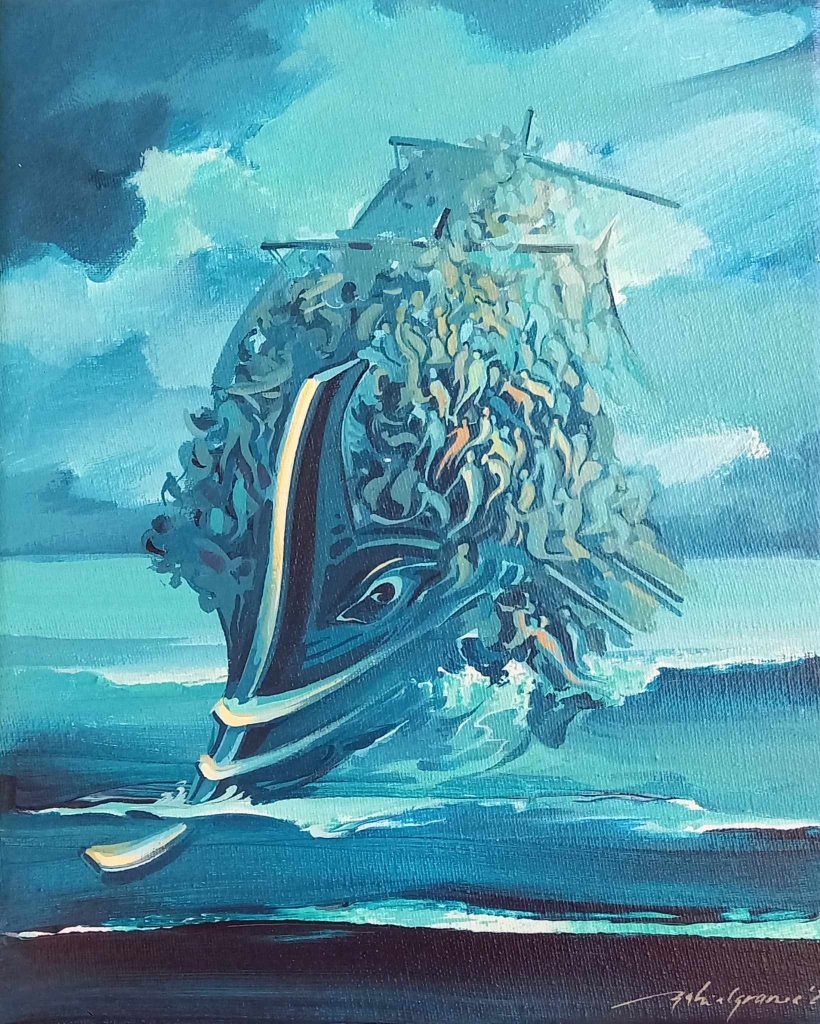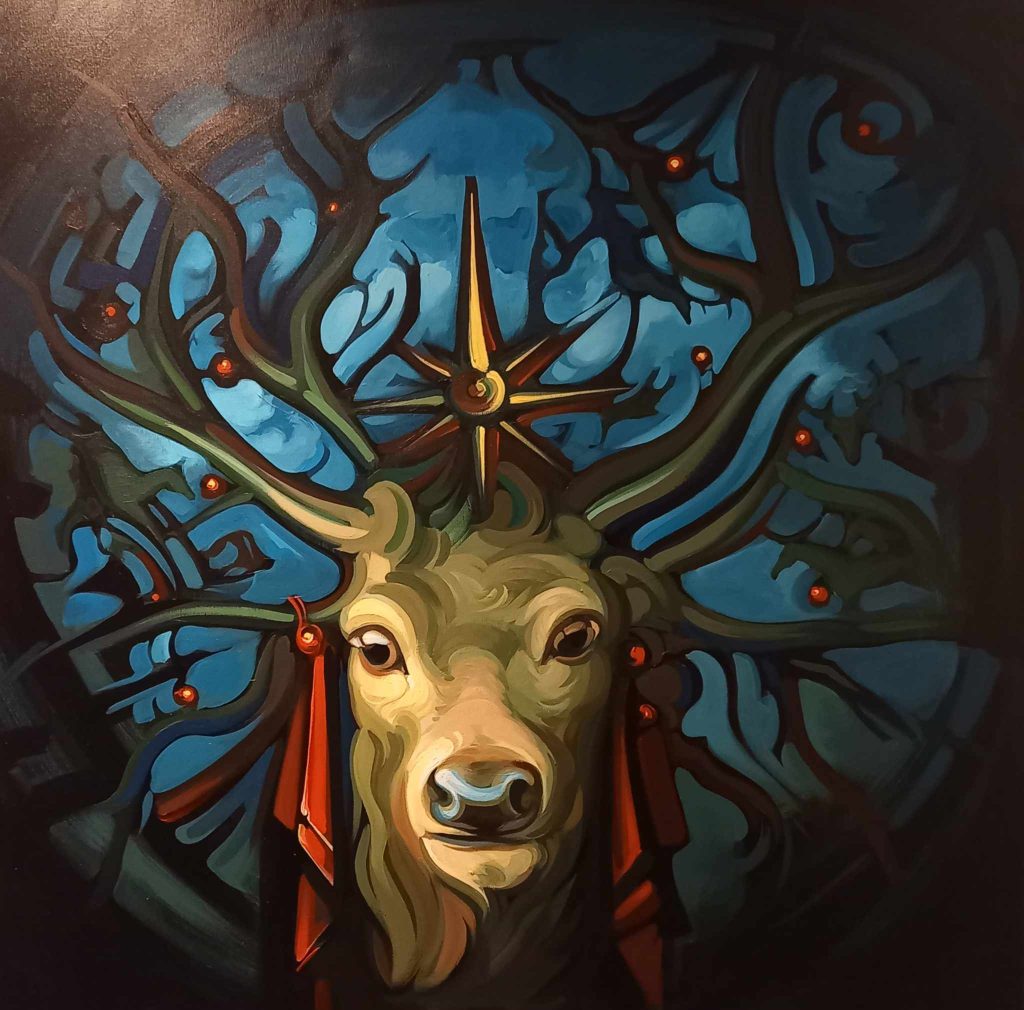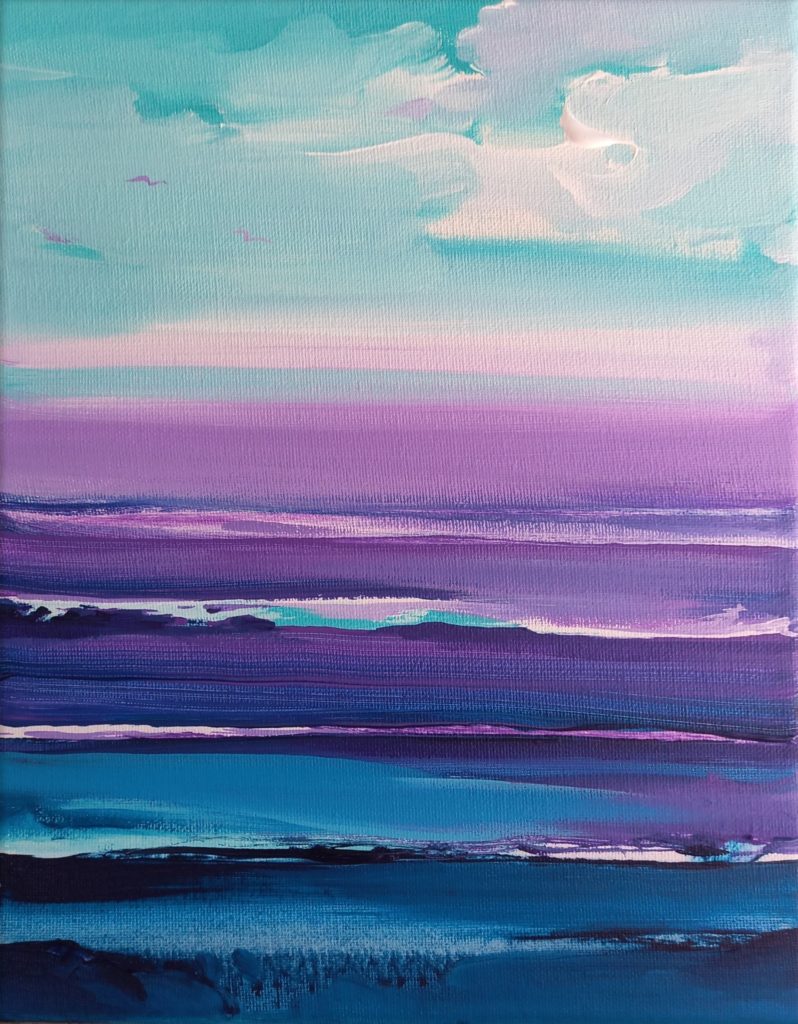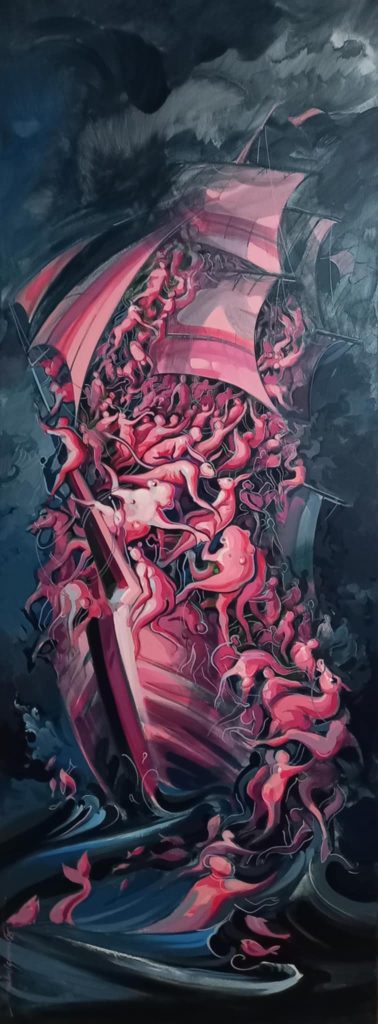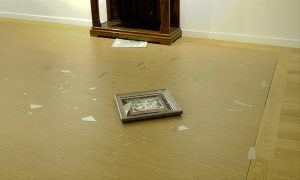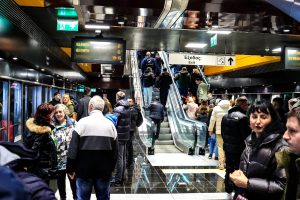Painter Gabriel Grama’s signature miniature humans with which most of his works are embroidered have a simple but bold symbolism that immediately captivates and may initially perplex the spectator: That we are very small and yet great, with an innate capacity for virtually unlimited spiritual growth, even in the face of extreme turmoil and adversity.
In his ongoing exhibition at the Artshot- Sophia Gaitani Gallery, entitled “Dream Ascensions” (through 8 April). Grama with over 30 works lays out a mystical dream world that delves into the deepest existential struggles of the human condition,
His “little people” climb up the masts of ships in tumultuous waters, with some making it on the ascent to salvation and others falling, in a turbulent world sea – denoting in some measure the geopolitical chaos of our world today – defined by the ominously threatening colours of the backdrop, which, however, are at times offset by bursts of hopeful light.
Animals and our relationship with them throughout the history of our species figure prominently in Grama’s mystical realm, with his fascination with the nobility of the horse – our perennial fellow-traveller and aid in our evolution – standing out. They mix with his miniature men at every turn, in a never-ending conversation.
In his depiction of horses, unicorns, deer, and rabbits, Grama displays an uncanny ability to get under the skin of the animal, revealing its inner soul through its innocent, thoughtful gaze.
Even before Grama in 2000 settled in Greece, he had harbored since his youth a deep affection for and fascination with the country, rooted in his admiration for its classical and Byzantine heritages (he is a devout Orthodox Christian), that have at various levels deeply influenced his art, as have the pagan-rooted folk performances with animal costumes that play out over the 12 days of Christmas in his native town in Romania.
Grama has both taken and given much to the land that he has admired and come to love – choosing to make his home and raise a family here – teaching art in Greek state primary schools for many years and obtaining tenure.
He has long been well-established in his native Romania, where the country’s Parliament in June-July of 2023 hosted a major exhibition of his works.
His current exhibition is being held under the aegis of the Romanian Embassy in Athens.
What does the title of your exhibition, Dream Ascensions, mean?
It means an uphill path through dreams. It signifies progress, from the Greek word “oneirovasies”. The effort, not only in my life but of all people, to move towards something more positive. That is an issue that has preoccupied me for quite a long time.
΄How has your spiritual progress been?
One cannot experience progress without spiritual help and evolution. It is very important I think. I may be an idealist or have faith, but I believe spiritual ascent and development is more important than all others.
What are your dreams?
My dreams are for us all to be well – my family and myself, our countries, our European environment. I dream mainly of having peace and untangling things in the future, so that whatever happens [in the ongoing Russia-Ukraine war] there can be a good ending. I do not necessarily want to impose a positive message through this exhibition, but I hope viewers understand it and receive it.
The image that comes across in a number of your pieces, especially the ships. is one of chaos and turbulence, with humans struggling to hold on for their lives.
Some of the works that I am exhibiting do depict these efforts of people. Some of the dreams are good and some bad. Yet, if you notice, in these works with people climbing the masts of ships, the vast majority of them are headed upwards and very few fall down, as compared to works that I had exhibited in the Kaplanon Gallery in 2019, before COVID.
Aside from the dream ascents we have the myth-making segment that presents a child-like world that combines my dreams with my childhood memories of Romanian tales and Greek mythology.
So the exhibition is a combination of all these things.
In your work you have exhibited a great interest in the horse, a noble animal the depiction of which you have revisited many times. What is it that attracts you to this subject?
The horse, just as the sea, symbolizes the journey, running and the element of flight. It is the dream, a means that helps you to travel and leave the present. It is humankind’s first tool, so to speak. Aside from the dog, the horse is our best friend. It helped us evolve as a species, as spirit, and as humans, Obviously, it has enormously helped people to travel and discover something better. Perhaps it was that, both as symbolism and as something practical, that prodded me from early childhood to want very much to learn to draw and paint horses well. I learned that, after the human body, the horse is the most difficult subject to draw on a canvas or a piece of paper.
In your paintings of various animals, from horses to deer and hares, you manage to get under their skin, to uncover, reflect and depict the soul of the animal. How do you manage to achieve that?
First of all, working with kids as a teacher in schools, I find myself very close to innocent living beings, to people who forgive, who love, and who hug you – to children. Perhaps the animals that I draw also have that innocence. I have not yet painted wild animals. I have focused on those re that are near the human environment. Also, the depiction of a number of these animals is rooted in my homeland of Romania. The New Year’s carnival is very rich. Little children wear full-body costumes dressed as deer, horses and bears.
I noticed from videos that bears figure prominently in the dancing carnival processions. Why haven’t you depicted them in your work?
I have not painted the bear exactly for this reason – because of all these animals is is the opposite – more wild, even though it too has an internal innocence in its soul perhaps.
In which part of Romania did you grow up?
I grew up in a beautiful city in the Carpathian Mountains called Piatra Neamt. That in translation means “German rock”, because since the 12th century we had many communities from Germany as well, and it is surrounded by the Carpathians. Hence, I grew up in northeastern Romania, Romanian Moldavia as we call it, These traditions remain very strong there, mainly during the 12 days of Christmas. Despite the fact that these are pagan-rooted, the villages have managed to continue this tradition and to allow the children to express themselves in this way.
You are an art teacher in the first through sixth grades in a Greek state school. What have you learned from the kids that may have become a component of your painting that did not exist prior to your teaching experience?
I learned about the dream, the child-like sensibility, joy and innocence. Many of the things that I paint have an element of childishness – related to comics, animation and cartoons that kids watch. Certainly that has influenced me, happily I would say, I live in my own positive world and it is a very happy one.
We see a lot of violence between children in our society today. Have you seen that at all at the school where you teach?
Yes, I have observed it, and I try in my own way, through games and drawings to solve our problems. Fortunately, kids, especially in primary school don’t hold grudges. They forgive easily and we resolve things right away. Perhaps later, in junior high school (gymnasium) and high school (lyceum), things evolve differently.
Do you think that art can tame children’s more violent instincts? How can it cultivate the spirit?
Certainly. That is clear. Children that devote a lot of time to what they are doing artistically, in some magical way become calmer, slow down their rhythm, have other interests, and view things with a different perspective. They feel the freedom for which they yearn through their drawings. They don’t have to go out into the courtyard or a park to seek it out in a violent manner. I think that it has to do with the time they devote to learning a musical organ or painting or learning about the lives of artists.
